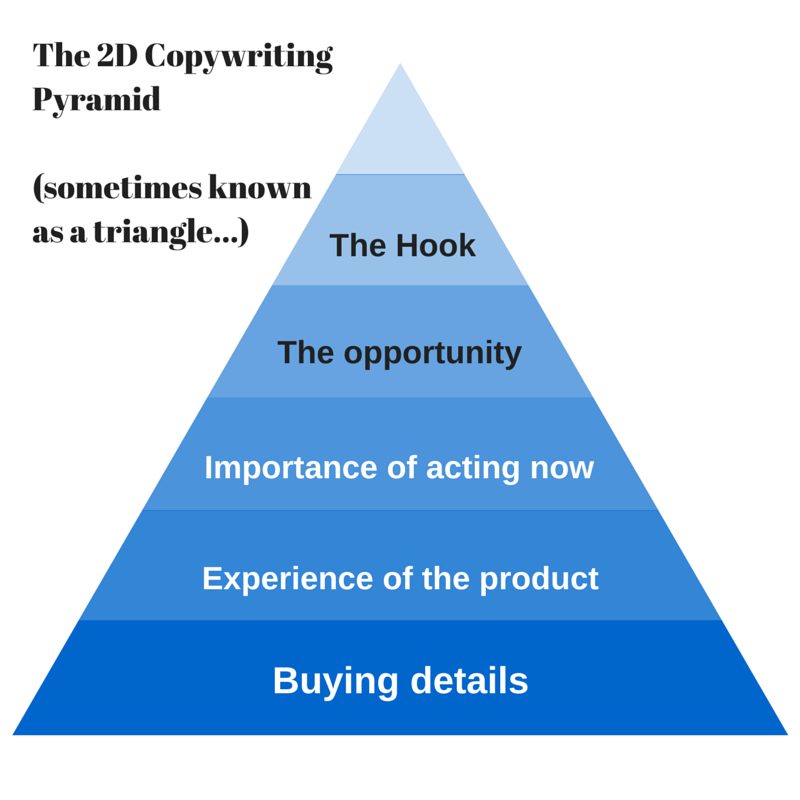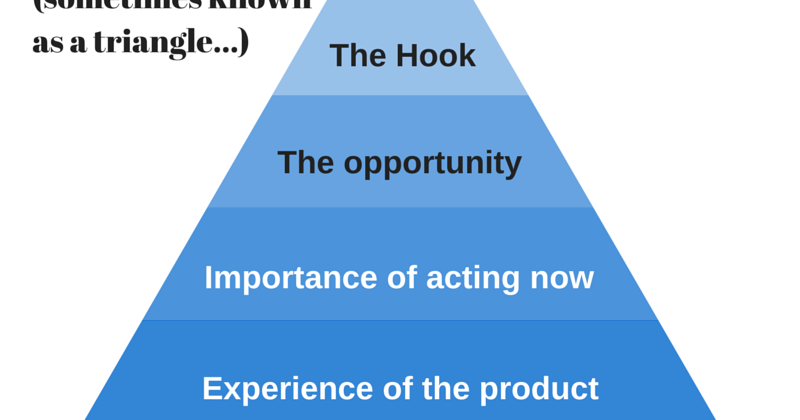Just recently we’ve been looking at some tips for writing B2B copy like the 44 words you really need to stop using.
Now, a lot of B2B products and services are complex. They have all these different parts and features and maybe even a few algorithms.
The problem people have when writing the copy is to make the content just as complicated as the product. Let me throw in a quick dramatisation:
TOMMY bursts into the living room where his MOTHER, FATHER, SISTER, GRANDPA and GRANDMA are gathering around the piano singing songs.
TOMMY
Quick! The unusually warm and humid conditions of the lower atmosphere have mixed with cooler conditions of the upper atmosphere and there is a violently rotating column of air in contact with the earth’s surface and a cumulonimbus cloud!
TOMMY’S FAMILY stare at him blankly. GRANDPA sniffs, wipes his nose. GRANDMA plays an F#.
TOMMY’S younger next door neighbour BILLY runs past him and stands in the middle of the sheepskin rug.
BILLY
There’s a twister coming!
TOMMY’S FAMILY immediately race outside to the bunker.
What, Why, What Next?
Tommy tried to impress importance and urgency of a complex occurrence by going into detail. However at that stage, his family didn’t need to know the development behind the situation, they needed to know:
What do I need to know
Um, there’s a Twister coming
Why is this important?
It’s about to devastate everything in its path – including your house
What should I do next
Definitely get in the bunker if you want to live
Lots of simple steps can add up to a complex sale
So how does this apply to your copywriting?
When selling a complex product, it can be tempting to outline all of the details in one go. There’s a lot of information needed to make the sale, best just get it all out in the open.
So web pages are filled with complicated spec and all the details in the hope that the prospect will read it, find all they need to know and make the sale or enquire.
Overwhelming for you and overwhelming for the reader.
The thing is you don’t need to get everything down in one go. In a recent workshop for B2B copywriting, an attendee was worried that their customers wouldn’t read a lot of online content, but there was a lot of information they needed to communicate to the prospect.
Getting in a bind over a problem like this means:
You’re thinking about the sale, but you should just be thinking about the next step
Copy is far easier to write if at each stage of the writing you ask yourself:
- What does the customer need to know?
- Why is this important to him?
- What should he do next?
Using simple content steps: The Copywriting Pyramid
The beauty of breaking your sales process down into little steps is that as the customer moves through, they’re telling you:
I like this, you still have my attention, give me more detail.
The more steps you take, the more information you can write about. Have a look at the following snazzy illustration I did all by myself:

Each tier represents a possible layer of information, with more detail being added at each stage.
What’s great about breaking it down in this way is that it encourages you to think in more simple terms about what your customer wants to do. As a result you’re less likely to over-complicate your content like Tommy did, and instead get right to the powerful point like Billy.
The hook
At the top of your pyramid is the hook. Think of this as your headline, so in very simple terms the message you want to get across here is just:
- Who you want to reach
- What you can do for them
For a great example of a very simple way to state this, look at the 2 step headline from last time on the blog. This can stop you trying to cram too much into your opening message.
Opportunity
If they’re interested, and either read on, or click through to your article you can give them a little bit more. But still keep the focus narrow, so: what is the opportunity you have for the reader.
- What problem can you solve?
- What results can you give them?
If they like the sound of that, tell them to continue reading or click through to find out more about:
The importance of acting now
At this stage you’ve piqued their interest in your promise, so drive home why they really can’t stay as they are and explain:
- Why it’s important to solve the problem / get those results in general
- Why the current economy / industry issue / political landscape means that this is the best / most critical time to solve the problem or get results
Once you’ve given them the relevant evidence, move onto the:
Experience of your product
Here you will want to give them an overview of what it’s like to use your product. We’re not talking full feature spec, more of a walk-through so your customer can visualise using your product. You might want to provide a demo, explain how the product or service is used. Because this is more descriptive, you can get away with using more content. If they like what they see, it’s time to:
Give them the buying details
If they’re still with you at this point, give them everything else. The spec, the feature list the full brochure, anything short of the instruction manual. Basically at this point you want to make sure they have all the details to make a purchasing decision, or to discuss it with their colleagues and have all the facts to hand.
This is a really simple outline but if you do have a complicated product to sell, think about layering the information you give at each stage so that it’s easy to tell your customer:
- Here’s what you need to know
- Here’s why it’s important
- Here’s what you need to do next
Interested in more resources to help you write your B2B marketing materials? You can try 2 free sample lessons over at Write With Influence, my online resource for business owners. Here you can find an introduction to B2B copywriting as well as tips for Writing to B2B Experts.

Leave a Reply